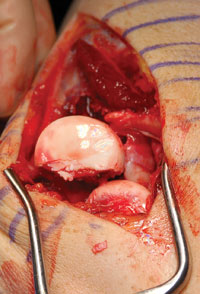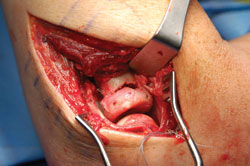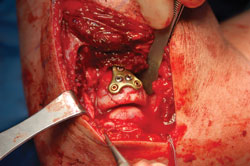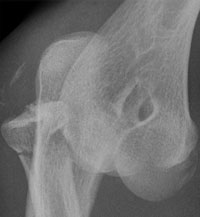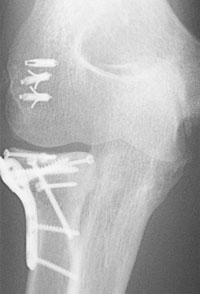High union rates seen for Mason radial head fractures treated with ORIF, iliac crest bone graft
Patients with type II and III radial head fractures reported good return of function, range of motion.
Click Here to Manage Email Alerts
Following Mason type II and type III radial head fractures, patients treated with open reduction internal fixation achieved high union rates and regained sufficient elbow function, according to a recently presented study.
“We found open reduction internal fixation (ORIF) of Mason type II and type III radial head fractures with defect bone grafting followed by capsule release and hardware removal resulted in a high rate of union, satisfactory range of motion and good functional outcomes as measured by DASH scores,” Randall W. Viola, MD, said at the 2011 Annual Meeting of the American Society for Surgery of the Hand.
Viola treated 30 patients with ORIF for radial head and neck fractures between 2004 and 2010 using standard plates and screws. In the single-surgeon retrospective study, there were 15 cases in the type II cohort and 15 cases in the type III cohort. The patients’ average age was 42 years, and the group included 16 men and 14 women.
|
|
Images: Viola RW |
All patients were treated with screw or plate fixation. Radial head or neck defects were filled with iliac crest bone graft. Medial and/or lateral collateral ligament injuries were treated by repair or reconstruction. Two of the 15 patients with type II fractures and nine of the 15 patients with type III fractures were treated with bone graft at the time of the initial fracture fixation. After healing, elbow capsule releases or hardware removal was performed, as necessary, Viola said.
Comparable union rates
The study results showed high union rates for both types of fractures after a minimum follow-up of 1 year. In the type II group, one patient developed a nonunion and was treated successfully with iliac crest bone graft. Seven patients regained full range of motion. Eight patients required contracture release and hardware removal. The average DASH score was 8 points for patients with type II fractures.
|
|
|
For the type III fractures, three patients developed nonunions and successfully underwent revision fixation and bone grafting. Six patients regained full range of motion. Nine required contracture release and hardware removal. In this group, the average DASH score was 10 points. The average DASH score for both cohorts was nine points.
Beyond the usual outcomes
There were no significant differences in range of motion between the type II and type III fractures, Viola noted, and both types of fractures exhibited good postoperative range of motion results. Postoperatively, the type II group had 80° pronation, 77° supination, 6° extension and 138° flexion; and the type III group had 79° pronation, 78° supination, 2° extension and 141° flexion.
|
|
|
Overall, the study was about more than function immediately after initial fracture fixation, Viola said at the meeting. “This is not simply a study of how the patients did after the initial fracture fixation, this is a study that looked at how they did after hardware removal and capsular releases and subsequent procedures.” – by Jeff Craven
Reference:
- Viola RW. Results of open reduction and internal fixation of Mason type II and III radial head fractures. Presented at the 2011 Annual Meeting of the American Society for Surgery of the Hand. Sept. 8-10. Las Vegas.

- Randall W. Viola, MD, can be reached at The Steadman Clinic, 181 West Meadow Dr., Suite 200, Vail, CO 81657; 970-476-1100; email: violarw@thesteadmanclinic.com.
- Disclosures: Viola has no relevant financial disclosures.

